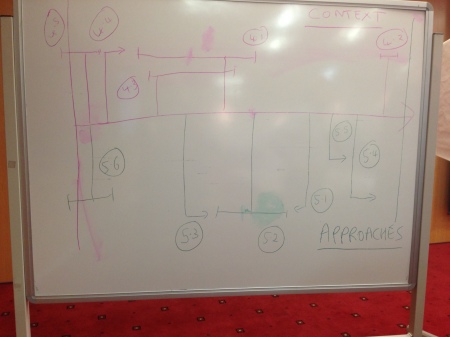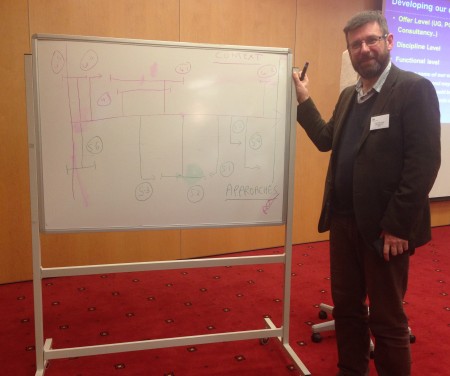Like any cricket fan I was horrified to hear last week of the death at the age of 25 of the Australian cricketer Phillip Hughes, three days after he received a head injury on the field of play during a Sheffield Shield match in Australia on Tuesday. Let me start by expressing my deepest condolences to his family and friends at what must be a terrible time for them. My thoughts also go to the bowler, Sean Abbott, whose delivery ended up causing the fatal injury. He should not be blamed and I’m sure he feels as bad as anyone about the incident.

What happened to Phillip Hughes is a reminder that cricket is a dangerous game. A cricket ball is hard – it is made of solid cork wrapped in leather – and can travel at speeds in excess of 90 mph when delivered by a fast bowler. When you get hit by one it really hurts. Thankfully serious injuries are relatively rare, but it nevertheless takes considerable physical and mental courage as well as great skill for a batsman to face up to fast bowling.
In this case it was Sean Abbott who bowled a short-pitched delivery (a “bouncer”) at Hughes. There’s nothing unusual about that – it’s a standard part of a fast bowler’s repertoire. Hughes saw it coming and got into position to play a hook shot, a cross-batted stroke played to a ball over waist height with the intent of sending it to the boundary. This is one of the most spectacular attacking shots in cricket but also one of the most dangerous. Often it involves playing the ball directly in front of the face, and if the batsman misses an injury is inevitable. On this occasion, Hughes seems to have misjudged the pace of the ball and went through with the shot too quickly. His upper body having swung around during the course of his attempted hook, when the ball missed the bat it thudded into the back of his head, underneath his protective helmet. The impact ruptured an artery and caused a massive flow of blood into his brain. He subsequently collapsed and was carried off the field, where he needed mouth-to-mouth resuscitation. He was taken to hospital, and a procedure carried out to reduce the pressure on his brain. Sadly he never recovered, and died three days later.
Of course the death of Phillip Hughes has led to a great deal of soul-searching in the cricket world. I think it’s quite right that a heart-breaking event like the death of a cricketer so make us redouble efforts to keep the game as safe as possible. I think that means looking very seriously at the design of the modern cricket helmet. Only this summer, England’s Stuart Broad was badly injured when he was hit by a ball that smashed through the faceguard on his helmet, which suggests to me that the design of the front of the standard helmet is faulty. The same type of helmet offers no protection to the lower part of the back of the skull, either. On the other hand, a helmet that was too bulky might restrict the movement of a batsman so much that it makes it more, not less, likely that they will get hit. One also has to try to maintain a reasonable perspective. The type of injury that killed Hughes – a vertebral artery dissection – is extremely rare, with only about 100 cases ever having been recorded at all, none which were on the cricket field. Not that long ago, nobody wore a helmet anyway; see below for an example.
Australians cricketers learn to play the game on pitches that are fast and hard, but generally of even bounce. That’s why the hook shoot is favoured more by Aussie batsman than by their English counterparts; pitches in England are generally slower and variable bounce is much more likely. Until relatively recently many English batsman didn’t play the hook shot at all, preferring instead to simply get out of the way of a bouncer than attempt to play it. After all, the ball isn’t going to hit the stumps if it’s bouncing around head height. Getting out of the way isn’t as easy as it sounds, however, because one’s instinctive reaction is either to try to protect your head with bat or gloves, to flinch away or try to duck. The proper technique, which requires practice to ingrain, is to keep your eye on the ball, drop the hands to keep the bat out of the way, and sway out of the path of the ball at the last minute. That may sound easy, but it certainly isn’t. I tried to do it in a school game years against a bowler a fraction of the pace of Sean Abbott, and ended up with the ball smacking me right on bridge of my nose. I had taken the “keep your eyes on the ball” advice a bit too literally…
Some have argued that bouncers should be banned. I think that would be a mistake. Part of the unique appeal of cricket is that the spectactors are aware not only of the skill of the players, but also their courage. A bouncer is a severe test of the mettle of a batsman, whether they choose to fight fire with fire by trying to hook, or simply standing firm and letting it go by. Some of the most enthralling passages of play I remember watching involved a demon fast bowler hurling down terrifying thunderbolts at batsman who could do little but get everything into line and try soak up whatever was thrown at him. Heroic defence is as much a part of the game as dashing strokeplay.
Take this example. Brian Close had been brought into open the England batting earlier in the 1976 series against the West Indies in an attempt to stiffen their resistance to the West Indian attack. He wasn’t the greatest player in the world nor the cricketing world’s most agreeable character, and as you can tell he wasn’t in the first flush of youth in 1976 either, but there is no denying his courage and determination. Here he is enduring a vicious battering at the hands of Michael Holding. One short-pitched delivery in this sequence came within a whisker of hitting him on the head; had it done so the consequences would have been horrendous as he was not wearing a helmet. As it was, he “only” had to take a succession of blows to his body. He scored 20 runs at Old Trafford, off 108 balls in 162 minutes, and was dropped for the next Test as was his opening partner John Edrich, although both had stood their ground and defended their wickets (and themselves) manfully.
Note that Michael Holding did get a warning here for excessive use of short-pitched deliveries, but the situation was very different from that faced by Phillip Hughes who was well set and trying to score runs rather than clinging on against a barrage aimed at his head and body.
The element of danger is not unique to the sport of cricket. Contact sports (e.g. rugby) also carry a risk of serious injury. Boxing is another, perhaps more extreme, example. Of course we should do everything we can to minimize the danger to the participants, but we can never remove the risk entirely. I’m not in favour of banning bouncers or boxing or other “dangerous sports”: as long as all concerned know the risks then they should be allowed to make the decision whether to expose themselves to those risks. In fact, everything we do in life carries an element of risk. If we’re not free to take chances, we’re not free to live at all.
R.I.P. Phillip Hughes (1988-2014).
POSTSCRIPT. In a touching gesture, the record of Phillip Hughes’s last innings has been changed to from “Retired Hurt 63” to “Not Out 63”.
Follow @telescoper












